Array vs Linked ListArray and Linked list are the two ways of organizing the data in the memory. Before understanding the differences between the Array and the Linked List, we first look at an array and a linked list. What is an array?An array is a data structure that contains the elements of the same type. A data structure is a way of organizing the data; an array is a data structure because it sequentially organizes the data. An array is a big chunk of memory in which memory is divided into small-small blocks, and each block is capable of storing some value. Suppose we have created an array that consists of 10 values, then each block will store the value of an integer type. If we try to store the value in an array of different types, then it is not a correct array and will throw a compile-time error. Declaration of arrayAn array can be declared as: To declare an array, we first need to specify the type of the array and then the array's name. Inside the square brackets, we need to specify the number of elements that our array should contain. Let's understand through an example. In the above case, we have declared an array of 5 elements with 'a' name of an integer data type. What is Linked list?A linked list is the collection of nodes that are randomly stored. Each node consists of two fields, i.e., data and link. Here, data is the value stored at that particular node, and the link is the pointer that holds the address of the next node. Differences between Array and Linked list
We cannot say which data structure is better, i.e., array or linked list. There can be a possibility that one data structure is better for one kind of requirement, while the other data structure is better for another kind of requirement. There are various factors like what are the frequent operations performed on the data structure or the size of the data, and other factors also on which basis the data structure is selected. Now we will see some differences between the array and the linked list based on some parameters. 1. Cost of accessing an elementIn case of an array, irrespective of the size of an array, an array takes a constant time for accessing an element. In an array, the elements are stored in a contiguous manner, so if we know the base address of the element, then we can easily get the address of any element in an array. We need to perform a simple calculation to obtain the address of any element in an array. So, accessing the element in an array is O(1) in terms of time complexity. 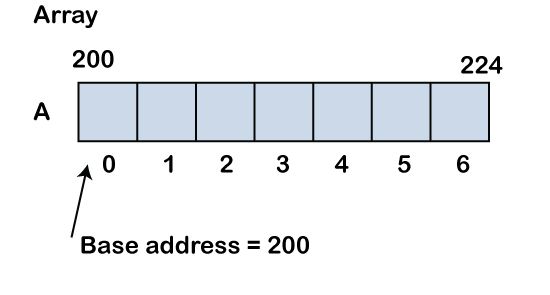
In the linked list, the elements are not stored in a contiguous manner. It consists of multiple blocks, and each block is represented as a node. Each node has two fields, i.e., one is for the data field, and another one stores the address of the next node. To find any node in the linked list, we first need to determine the first node known as the head node. If we have to find the second node in the list, then we need to traverse from the first node, and in the worst case, to find the last node, we will be traversing all the nodes. The average case for accessing the element is O(n). We conclude that the cost of accessing an element in array is less than the linked list. Therefore, if we have any requirement for accessing the elements, then array is a better choice. 2. Cost of inserting an elementThere can be three scenarios in the insertion:
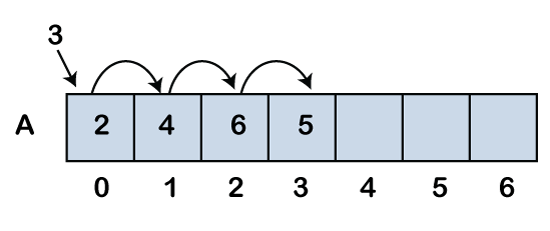
In the case of a linked list, to insert an element at the starting of the linked list, we will create a new node, and the address of the first node is added to the new node. In this way, the new node becomes the first node. So, the time complexity is not proportional to the size of the list. The time complexity would be constant, i.e., O(1). 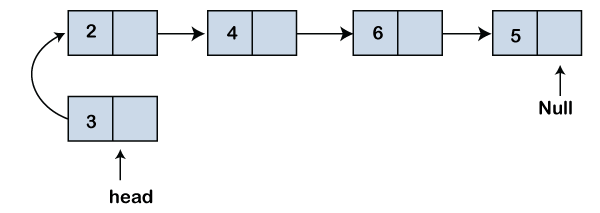
If the array is not full, then we can directly add the new element through the index. In this case, the time complexity would be constant, i.e., O(1). If the array is full, we first need to copy the array into another array and add a new element. In this case, the time complexity would be O(n). To insert an element at the end of the linked list, we have to traverse the whole list. If the linked list consists of n elements, then the time complexity would be O(n).
Suppose we want to insert the element at the ith position of the array; we need to shift the n/2 elements towards the right. Therefore, the time complexity is proportional to the number of the elements. The time complexity would be O(n) for the average case. 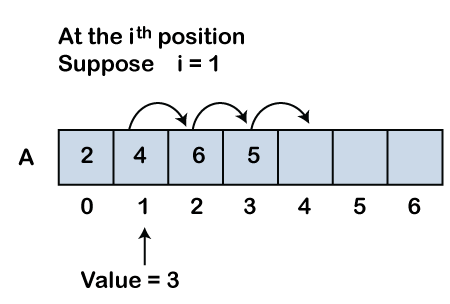
In the case of linked list, we have to traverse to that position where we have to insert the new element. Even though, we do not have to perform any kind of shifting, but we have to traverse to n/2 position. The time taken is proportional to the n number of elements, and the time complexity for the average case would be O(n). 
The resultant linked list is: 
The implementation of an array is easy as compared to the linked list. While creating a program using a linked list, the program is more prone to errors like segmentation fault or memory leak. So, lots of care need to be taken while creating a program in the linked list.
The linked list is dynamic in size whereas the array is static. Here, static doesn't mean that we cannot decide the size at the run time, but we cannot change it once the size is decided. 3. Memory requirementsAs the elements in an array store in one contiguous block of memory, so array is of fixed size. Suppose we have an array of size 7, and the array consists of 4 elements then the rest of the space is unused. The memory occupied by the 7 elements: 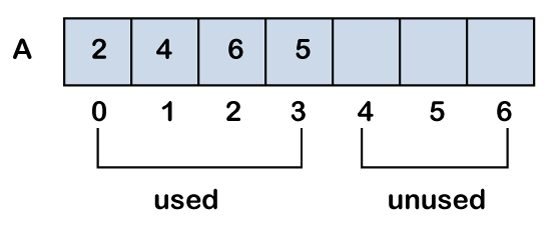
Memory space = 7*4 = 28 bytes Where 7 is the number of elements in an array and 4 is the number of bytes of an integer type. In case of linked list, there is no unused memory but the extra memory is occupied by the pointer variables. If the data is of integer type, then total memory occupied by one node is 8 bytes, i.e., 4 bytes for data and 4 bytes for pointer variable. If the linked list consists of 4 elements, then the memory space occupied by the linked list would be: Memory space = 8*4 = 32 bytes The linked list would be a better choice if the data part is larger in size. Suppose the data is of 16 bytes. The memory space occupied by the array would be 16*7=112 bytes while the linked list occupies 20*4=80, here we have specified 20 bytes as 16 bytes for the size of the data plus 4 bytes for the pointer variable. If we are choosing the larger size of data, then the linked list would consume a less memory; otherwise, it depends on the factors that we are adopting to determine the size. Let's look at the differences between the array and linked list in a tabular form.
Next TopicStack vs. Queue
|
 For Videos Join Our Youtube Channel: Join Now
For Videos Join Our Youtube Channel: Join Now
Feedback
- Send your Feedback to [email protected]
Help Others, Please Share










